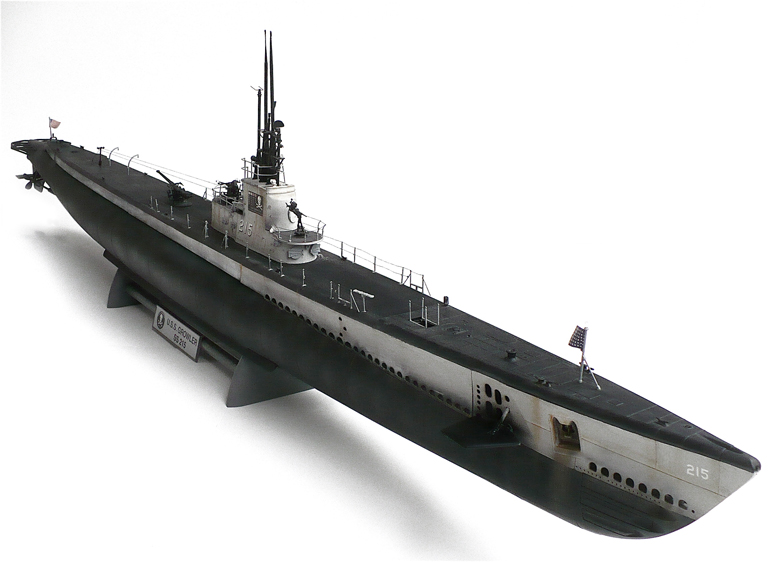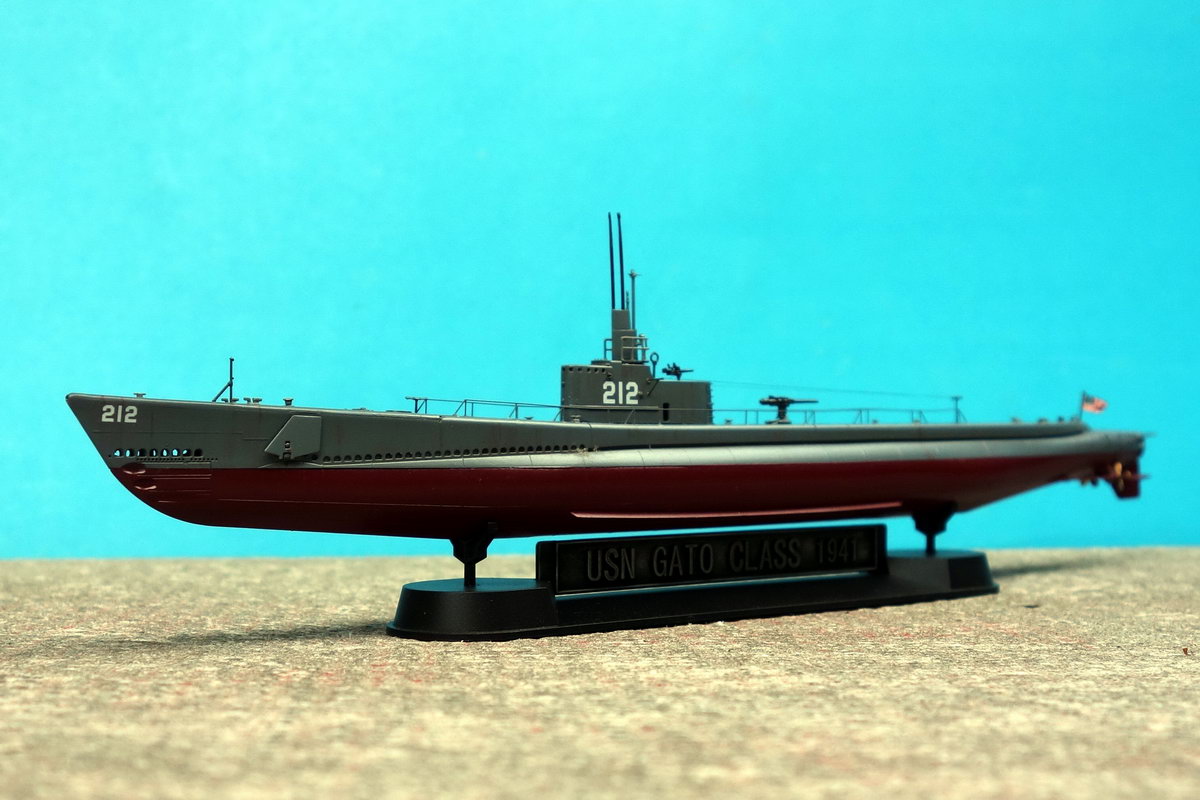

The submarine Gatos were 51 tons heavier and 4 feet 6 in (1.4 m) longer. The Gatos differed from the preceding Tambors only in minor details. Thus, when Cavalla (SS 244) was rebuilt as a hunter-killer boat in 1952, she emerged as SSK 244. If a boat changed role, she might have her hull number prefix changed, but not the sequence number itself. Thus the first postwar attack submarines built by the Navy were the six boats of the 7cmg-class that started with hull number SS 563. Even though the highest numbered the submarine Gato actually completed was Grenadier (SS 525), numerous boats in the final wartime orders were cancelled, some with lower hull numbers and others with numbers all the way up to SS 562. The numbers assigned to boats that were cancelled generally weren't reassigned. It wasn't unusual that Drum (SS 228) was started and completed before the submarine Gato (SS 212). These numbers did not reflect in any way die order in which boats were started or completed. Hull numbers SS 212-227 comprised the original order from Electric Boat while SS 228-235 were ordered at the same time from Portsmouth. Hull numbers were assigned in blocks to a particular builder when the boats were ordered. Unlike other navies that identified ships with pennant numbers that could be randomly changed, the Navy assigned permanent hull numbers, which used an alphabetic prefix indicating type, most often but not always two letters, and a number indicating sequence within type. The seventy-three submarines Gato were assigned hull numbers SS 212 (USS Gato) through SS 284 (USS Tullibee). There would soon be enough boats to do the job. Of this number, only one, Drum (SS 228), was in commission on 7 December 1941, but ten more had been launched and fully twenty-one more laid down before the Japanese attacked. This brought the total number of the submarine Gato-class boats ordered before the attack on Pearl Harbor to seventy-three.

#Gato class submarine free
When it was realized that Mare Island would have two free slips towards the end of this cycle, two more hulls were added to the order in April 1941. These orders went out to the experienced Electric Boat Company (forty-one boats), Portsmouth Naval Shipyard (fourteen boats) and Mare Island Naval Shipyard (six boats), and to one newcomer to submarine construction, Manitowoc Shipbuilding Company (ten boats). On, twenty-two more submarines were added to the initial six, followed by an additional forty-three on 16 August. legislators, and President Roosevelt finally had the money and authority to fill the available building slips with keels and more to follow when those were launched.

The fall of France to Nazi Germany was a wake-up call to U.S. After the initial 1941 budget authorization of six boats of the new submarine Gato-class, events had conspired to dramatically increase that number. This last problem, at least, was well in hand. Forty-odd boats, some ten or more years old, were nowhere near enough. Finally, there simply weren't enough boats to sustain a massive assault on enemy lifelines.

Another was the unreliability of torpedoes, which often failed to explode or ran erratically. Some never made the transition and were replaced others adapted brilliantly. One reason was the necessary learning curve as submarine commanders shook off the cautious habits of peacetime. At first that toll was smaller than it should have been for a number of reasons. From the first days of the war, American submarines penetrated far into Japanese waters and exacted a steady toll of enemy shipping. With the exception of the Doolittle raid of April 1942, American aircraft carriers were kept mainly on the periphery of the Japanese advance well into 1943. The deep strikes were achieved almost exclusively by American submarines. The argument has been made with some persuasiveness that those reverses were inevitable, the result of serious overextension of Japanese resources, and that almost any American strategy would have eventually led to the same result, but the boldness of Nimitz and the skill of Fletcher and Spruance advanced the final decision by years and saved countless lives. The containment was achieved by the aircraft carriers, which were deployed with courage and skill and turned back the Japanese at Coral Sea and decisively at Midway.


 0 kommentar(er)
0 kommentar(er)
